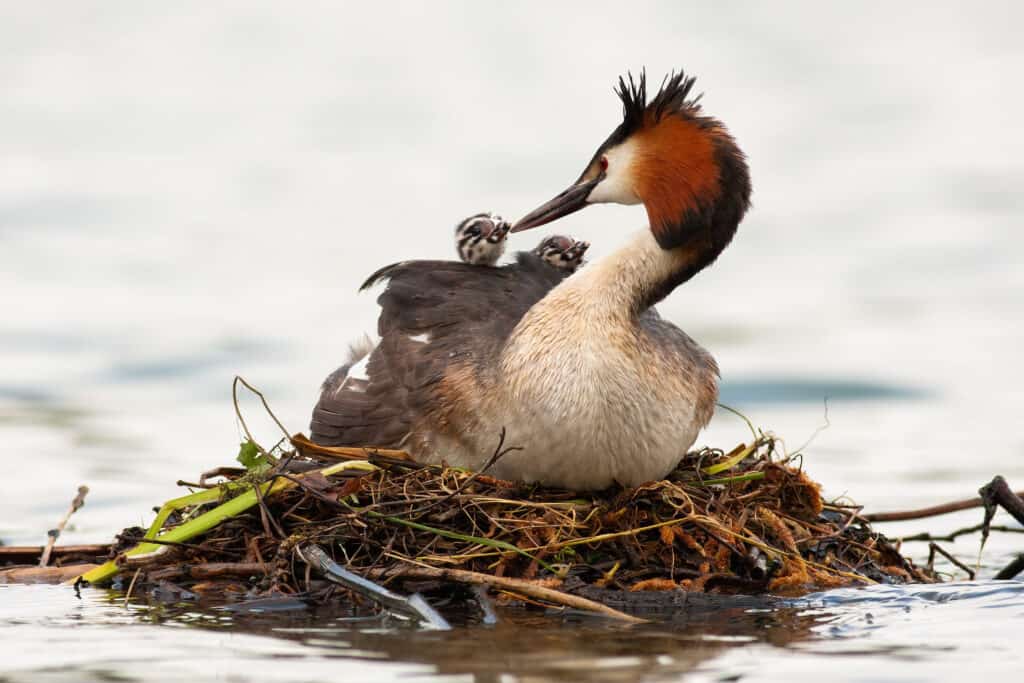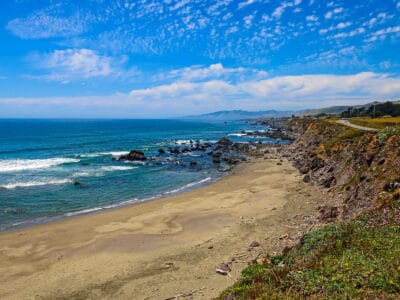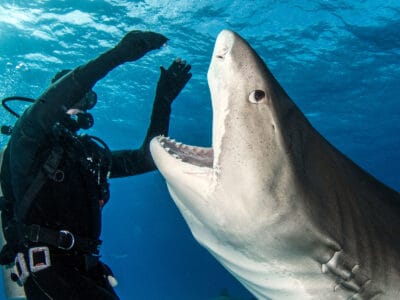Grebe
Podilymbus podiceps, Tachybaptus ruficollis, and others
They swim like frogs
Advertisement
Grebe Scientific Classification
- Kingdom
- Animalia
- Phylum
- Chordata
- Class
- Aves
- Order
- Podicipediformes
- Family
- Podicipedidae
- Genus
- Podiceps
- Scientific Name
- Podilymbus podiceps, Tachybaptus ruficollis, and others
Read our Complete Guide to Classification of Animals.
Grebe Conservation Status
Grebe Facts
- Prey
- Fish, crustaceans
- Name Of Young
- Grebette
- Group Behavior
- Social
- Fun Fact
- They swim like frogs
- Biggest Threat
- Habitat loss and climate change
- Most Distinctive Feature
- Dense waterproof plumage
- Wingspan
- 8 inches to 2 feet
- Incubation Period
- 3 to 4 weeks
- Age Of Independence
- 10 to 16 weeks
- Habitat
- Freshwater lakes and coastal areas
- Diet for this Fish
- Carnivore
- Lifestyle
- Diurnal
- Favorite Food
- Fish
- Type
- Bird
- Common Name
- Grebe
- Number Of Species
- 21
- Location
- All continents except Antarctica
- Nesting Location
- Floating mass in freshwater
- Migratory
- 1
They are closely related to flamingos.
Grebes are freshwater diving birds native to freshwater and marine habitats. They inhabit every continent except for Antarctica and any arid environment. They are excellent swimmers and divers, and while they resemble other diving birds, they are more closely related to flamingos. Learn all about the fascinating grebe, like how they have synchronized dances and floating nests!
5 Amazing Grebe Facts
- They lay their eggs in floating vegetative nests.
- About a third of grebe species are threatened or near-threatened.
- Some grebes are flightless and stay in their habitat year-round.
- Their feathers are waterproof, and they swim similarly to frogs.
- Grebes eat their feathers and feed them to their young.
Where to Find Grebes
These widely-distributed birds primarily inhabit freshwater lakes, except when they migrate to their winter habitats and occasionally live in coastal areas. Their habitats largely depend on the species. Western grebes stay on prairie lakes in British Columbia and migrate to the Pacific Coast during winter. And great crested grebes in Europe and Asia breed in freshwater lakes and winter in lagoons and estuaries. If you’re a birder looking to find grebes, try searching deep inland lakes during summer and ocean shores in the winter. Spotting scopes come in handy for these birds.
Grebes inhabit every continent except Antarctica and don’t live in arid environments. They even colonized islands like Madagascar and New Zealand. Grebe species like the Junin and Atitlan (recently extinct) are lake endemic, meaning they don’t migrate.
Grebe Nest
Their nests are plant material platforms that float on water, often hidden by vegetation. Grebes dive to the bottom of the lake, picking up dead plant matter and then piling it up on top of the water until it forms a mass. The decaying plant matter they use gives off some heat that helps the incubation process.
Scientific Name
Grebes are a single family (Podicipedidae) of the order Podicipediformes. There are five genera and 22 species overall. The genera groups include Aechmophorus, Podiceps, Podilymbus, Rollandia, and Tachybaptus.
The 22 grebe species include:
- Pied-billed grebe
- Little grebe
- Tricolored grebe
- Australasian grebe
- Madagascar grebe
- Least grebe
- Hoary-headed grebe
- New Zealand grebe
- Western grebe
- Clark’s grebe
- Great grebe
- White-tufted grebe
- Titicaca grebe
- Red-necked grebe
- Great-crested grebe
- Horned grebe
- Black-necked grebe
- Silvery grebe
- Junin grebe
- Hooded grebe
- North American eared grebe
Size, Appearance, and Behavior
Grebes are small to medium-sized aquatic birds built for the water. They range in size from the least grebe at four ounces and nine inches to the great grebe at 3.8 pounds and 28 inches. They have narrow wings, large feet, and lobed toes, which remarkably work like the blades of a propellor. Their dense plumage is waterproof and features undecided feathers that stick out at right angles. They can adjust their buoyancy by pressing these feathers against their body. Non-breeding grebes are plain dark brown and white. In the breeding season, they develop chestnut markings on their head. Their young often have striped plumage and may keep some when they grow to full size.
Due to their excellent swimming and diving skills, many are reluctant to fly. Instead, they dive under the water when predators get close. They prefer to swim low in the water, with just their head exposed. These birds resemble frogs when they swim, spreading their feet, bringing them inward, and thrusting forward. They can also run for short distances but may fall over due to the placement of their back feet.
Once they develop their ornate breeding markings, they perform display rituals to win over their mates. In fact, these birds are known for their fascinating courtship displays, which may include preening, head shaking, diving, and treading water in a vertical position. Grebes are monogamous for at least one breeding season. Once their young have hatched, they feed them their feathers after grooming which filters material passing through the intestine. Researchers believe this behavior may reduce parasites and assist in pellet formation.

Baby grebes spend time on their parents’ back. They reach independence when they’re between 10 and 16 weeks old.
©WildMedia/Shutterstock.com
Migration Pattern and Timing
While not all grebes migrate, many move to warmer areas after breeding. Species like the Western grebe first fly to lakes in the fall, where they molt their wing feathers. Once their flight feathers grow, they migrate to salty water areas like coastlines, bays, and estuaries. By spring, they are back to their breeding grounds.
Diet
Grebes are carnivores and eat almost entirely animal matter.
What Do Grebes Eat?
Grebes have varied diets. Some, like the Western grebe, feed on fish, while others eat crustaceans or small invertebrates. These birds are known for swallowing their feathers, forming a plug in the pocket of their stomach, which is effective in filtering material. These pockets, established shortly after hatching, hold fish bones until they are digested.
Predators, Threats, and Conservation Status
One-third of the grebe population is threatened or near-threatened. These water birds suffer from environmental and human-caused issues due to their habitat locations. Their threats include housing and urban development, agro-industry farming, fishing and harvesting, dam building, pollution, invasive species, climate change, and general human disturbance. At least three grebe species are already extinct.
What Eats Grebes?
While grebes don’t have many natural predators, they are vulnerable when nesting. Their predators include raccoons, crows, coots, gulls, owls, eagles, falcons, and cottonmouths. Grebes typically dive underwater when threatened by predators, and their young can ride on their back after they’ve hatched.
Reproduction, Young, and Molting
Mating occurs on their floating platform nests, and females lay three to seven eggs. Adults cover the eggs with soggy plant material and let them incubate for three to four weeks. After hatching, the young abandon their nest and spend their time on their parent’s backs. Most young are independent once they reach 10 to 16 weeks old.
Population
The grebe population is abundant, reaching six continents. The Western grebe along has 90,000 mature individuals. However, most of their species are declining, and several species have threatened or endangered statuses.
Up Next:
View all 181 animals that start with GGrebe FAQs (Frequently Asked Questions)
Do grebes migrate?
Some grebe species who nest in cold regions will migrate for the winter, while others stay in their environments year-round. Some species, like the short-winged grebe, are flightless.
How fast do grebes fly?
Some grebes can fly around 30 Mph. Their flight is unstudied mainly due to their propensity for night flying.
When do grebes leave the nest?
They desert their nests shortly after the eggs hatch, and the young ride on their parent’s backs, becoming independent within 25 to 62 days.
How do you find grebes?
You can find them in freshwater habitats like lakes and marshes during the breeding season. In winter, they move to marine environments along coastlines.
What time of year is best for finding grebes?
Look for migrating birds in early spring and mid-fall around lakes, rivers, and coasts. You can find nesting grebes during spring and summer near freshwater sources and near the beach during winter.
What do grebes eat?
The grebe’s diet is primarily fish, invertebrates, and crustaceans. Some have more varied diets.
What threatens grebes?
While some have stable populations, other grebe species are threatened or endangered. Their most common threats include climate warming, fishing nets, habitat loss, and fertilizers degrading their nesting sites.
What is a grebe baby called?
A baby grebe is called a “grebette.”
How long do grebes live?
Their lifespan varies significantly by species, ranging from a few years to 15.
How do grebes mate?
A female shows she wants to mate by sitting in her nest, lifting her feathers, and clucking.
Thank you for reading! Have some feedback for us? Contact the AZ Animals editorial team.
Sources
- IUCN Red List / Accessed September 6, 2022
- Archive / Accessed September 6, 2022
- Senckenberg / Accessed September 6, 2022
- Britannica / Accessed September 6, 2022


















